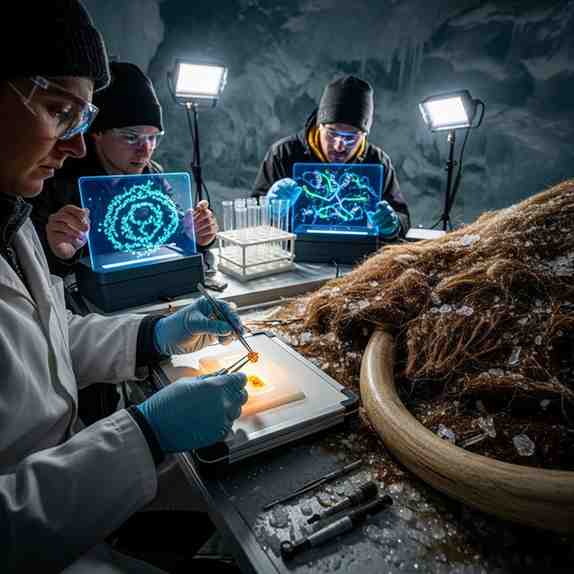
Ancient RNA Recovered from a 39,000-Year-Old Woolly Mammoth
In a breakthrough for palaeogenomics, scientists have successfully sequenced ancient RNA from a 39,000-year-old woolly mammoth , offering unprecedented insight into cellular activity shortly before its death. The discovery demonstrates that even fragile molecules like RNA—known for rapid degradation—can survive for tens of thousands of years under ideal permafrost conditions.
Exceptional Discovery from Siberian Permafrost
The specimen, nicknamed Yuka , was discovered along the Laptev Sea coast in Siberia. The mammoth’s extraordinary preservation, including intact skin and muscle fibres, provided an invaluable opportunity for researchers to extract trace quantities of RNA. Stable sub-zero temperatures, limited microbial activity and rapid burial created an environment capable of preserving molecular material far beyond typical biological limits.
What the Recovered RNA Reveals
Sequencing results uncovered RNA transcripts linked to muscle structure, metabolic pathways and cellular repair functions —offering clues to which genes were active when the animal was alive. Some transcripts indicated stress or muscle strain , providing a rare snapshot of physiological conditions near the mammoth’s time of death. Comparative genomic analysis confirmed that the sequences matched woolly mammoth and modern elephant gene families, verifying their authenticity.
Cutting-Edge Techniques Enabled Recovery
Researchers used ultra-sensitive extraction protocols designed for heavily fragmented RNA. Next-generation sequencing was calibrated to read extremely short molecules, while strict contamination safeguards ensured only genuine mammoth material was analysed. This achievement expands the scope of ancient biomolecular research from DNA into the realm of ancient gene expression.
Exam Oriented Facts
-
Yuka the mammoth is ~39,000 years old , preserved in Siberian permafrost.
-
RNA reveals active genes , unlike DNA which records genetic code only.
-
Recovered RNA showed muscle, metabolism and stress-response transcripts.
-
Permafrost’s stable low temperatures enable long-term biomolecule preservation.
Permafrost Archives and Rising Climate Risks
The study reinforces permafrost’s role as a natural archive of Ice Age life. However, rapid warming threatens to destroy such well-preserved specimens before they can be studied. As more remains emerge from thawing ground, scientists stress the urgency of documenting them swiftly to unlock lost chapters of evolutionary and ecological history.
Month: Current Affairs - November 17, 2025
Category: Ice Age Megafauna